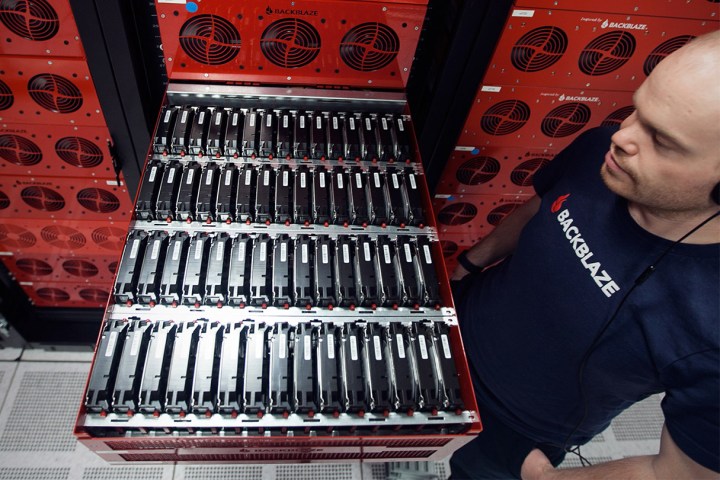
How is that kind of storage even possible? You can download the CAD files for the Pod right here and find out. Follow them, and for $16,300 you can fill a rack with 8TB Seagate SMR drives, giving you 480TB for $0.036 per gigabyte, ExtremeTech reported. It’s a great design, but just as remarkable is the demonstration of how affordable hard drives have become. Obviously it’s not intended for home use, but isn’t is just fun to imagine building? Scroll through the designs and drool a little.
Backblaze is a cloud storage and backup company that hosts 200 million gigabytes of files, and you don’t share that many files without learning a thing or two about building servers. The company open sources its hardware designs, meaning anyone who wants to build a version of them is permitted to. Over the years universities, businesses, and a few hobbyists have taken advantage of various incarnations of the Pod.
The Backblaze Pod 6.0 is new this week, and it’s impressive. The design crams 60 hard drives into a 4U chassis, yet still keeps factors like heat and performance in check. Details like SATA cables needed to be obsessed over. Backblaze can build one of its units for under $9,000, which plays no small part of why it can offer unlimited file storage for $5 a month.
The company uses consumer-grade drives instead of enterprise ones, and accounts for drive failures by ensuring there’s enough redundancy to avoid data loss. Because of this, Backblaze’s annual reports on drive reliability are a must-read for any hardware enthusiast.
Backblaze, it needs to be stated, does not sell Pods directly: It’s a cloud company, not a hardware one. Anyone who wants a Pod needs to build it themselves, or find a third-party vendor who picks up the design and sells versions of it. And while most of us don’t need this kind of storage, it’s a pretty amazing example of what’s possible.


